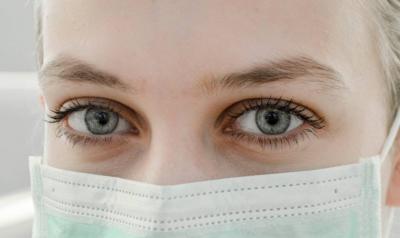Seasonal influenza and COVID-19 are respiratory illnesses caused by different groups of viruses. Despite a relative increase in awareness and vigilance regarding infections and public and personal hygiene, the risk remains. There are slight variations in the symptoms of viral diseases, including COVID-19 in its early stages, making it difficult to distinguish between ordinary influenza, swine flu, and COVID-19. Therefore, it is essential to know the differences to maintain personal safety and the safety of those around us at home and work, according to the health website "Only My Health."
### COVID-19 and Influenza Simultaneously
According to Dr. Vignesh Naidu, a consultant physician at Yashoda Hospitals in Hyderabad, it is possible for a person to contract both influenza and COVID-19, with symptoms of both manifesting simultaneously. However, COVID-19 spreads faster than any other viral infection or flu, making it crucial to avoid gatherings and maintain physical distancing at all times. He emphasized that there are similarities in types of respiratory illnesses, making it challenging to determine the type of illness based solely on symptoms.
### Different Tests
Different tests should be conducted to identify the causative agent and handle it with care and precision according to medical and government guidelines. Loss of smell and taste is more commonly observed in COVID-19, and not every person with influenza necessarily has a fever. Young people often experience diarrhea among a range of flu-like symptoms compared to adults or the elderly. It is believed that the effects of vaccination and immunization campaigns have made current symptoms milder, but the problem lies in that they can last longer and seem to lead to an increase in the spread of infection.
### Common Symptoms
The symptoms of seasonal influenza and swine flu are quite similar. The most common symptoms of respiratory diseases caused by seasonal and swine flu viruses include:
- Fever and chills
- Feeling feverish without high temperature
- Cough that can be dry or productive
- Shortness of breath
- Fatigue and exhaustion
- Dizziness
- Feeling faint
- Sore throat
- Runny nose
- Nasal congestion or blockage
- Muscle aches
- Headache and nausea
- Vomiting
- Loss of appetite
- Diarrhea
- Loss of smell
- Change in taste or loss of ability to taste
### Complications of COVID-19 and Swine Flu
More severe forms of complications include pneumonia, respiratory distress or failure, life-threatening infections, heart attacks, strokes, dysfunction or failure of multiple organs, encephalitis, myositis, and blood clots in blood vessels supplying the lungs and limbs, as well as secondary bacterial and fungal infections. Altered blood flow to large bones can lead to necrosis and subsequent fractures, and spontaneous gastrointestinal bleeding has been documented. There are also noted significant increases in blood sugar levels after recovery from COVID-19, not just in diabetic patients. The worst complications occur at higher rates in COVID patients than in any other respiratory illnesses.
### Prevention Tips
A set of diagnostic tests is crucial for accurately determining the type of fever affecting the body. Dr. Naidu provided some preventive tips against any type of flu and viruses, including SARS-CoV-2:
1. Get the flu vaccine.
2. Quickly diagnose whether the infection is just a cold and fever.
3. Check for any accompanying infections and dengue fever.
4. Test to see if a person has swine flu.
5. Check for abdominal pain, persistent vomiting, and/or mucus bleeding.
6. Maintain stable room temperature and cleanliness in the surrounding environment.
7. Change clothes and use disinfectants in laundry.
8. Keep a safe distance from people who are sneezing, coughing, or showing any symptoms of illness.
9. Undergo diagnostic testing as soon as possible to determine if there is a simultaneous infection with more than one virus to significantly reduce the risk of fatalities and the need for hospitalization.
### Procedures to Differentiate Viral Diseases
There are multiple tests and analyses to help identify various respiratory viral diseases; some rely on taking blood samples while others use swabs of mucus or saliva. However, in cases where COVID-19 infection is suspected, both blood analysis and swabbing are important. Rapid antigen kits are also available for identification, and the most reliable test for COVID-19 is the PCR swab test. Tests are also available for H1N1, Influenza A and B, MERS, SARS-CoV-2, and specific and quantitative antibody antigens to help determine the duration of infection and whether the condition is advanced. Doctors monitor inflammation markers to keep track of the disease’s progression or deterioration, and high-resolution imaging of the lungs may be utilized to assess the extent of the underlying infection and confirm the response to treatment protocols.




